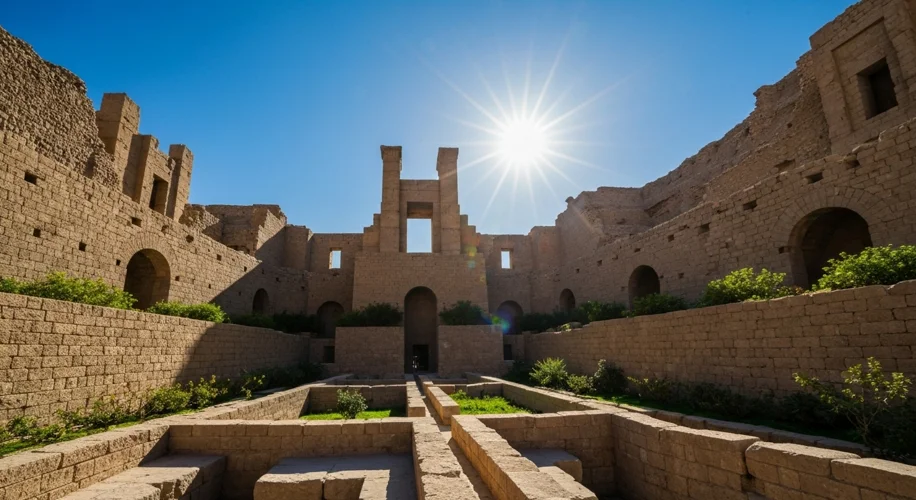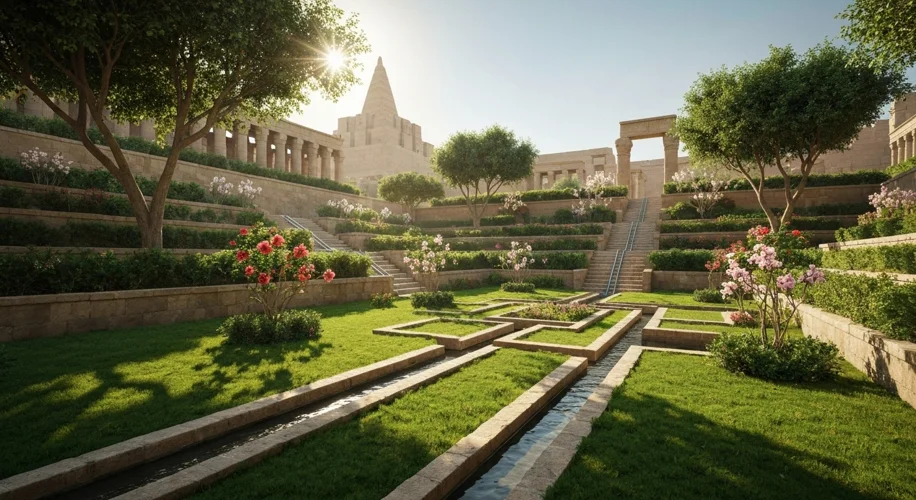Imagine a verdant paradise, a cascade of lush greenery and exotic blooms, reaching towards the Mesopotamian sky. Picture fragrant flowers, rustling leaves, and the gentle murmur of water, a stark contrast to the arid landscape surrounding the magnificent city of Babylon. This was the vision of the Hanging Gardens, an oasis of unparalleled beauty and an engineering marvel that earned its place as one of the Seven Wonders of the Ancient World. Yet, despite its legendary status, the very existence and precise location of this wonder remain shrouded in mystery, igniting a debate that continues to captivate historians and archaeologists to this day.

The story of the Hanging Gardens is most famously attributed to King Nebuchadnezzar II, the powerful ruler of the Neo-Babylonian Empire, who reigned from 605 to 562 BCE. Legend has it that Nebuchadnezzar commissioned the gardens to please his wife, Amytis of Media. Amytis hailed from the mountainous region of Media, a land characterized by its verdant hills and cool climate. Homesick for her homeland, she is said to have pined for the green landscapes she had left behind. To console his beloved queen and recreate the comforting environment of her native land, Nebuchadnezzar is believed to have ordered the construction of an elaborate, artificial mountain adorned with a breathtaking array of plants.
This monumental undertaking would have required an extraordinary feat of engineering. Ancient texts, primarily from Greek and Roman historians like Diodorus Siculus, Strabo, and Quintus Curtius Rufus, describe tiered terraces supported by arches and columns, creating a towering structure. These terraces were purportedly irrigated by an advanced system that pumped water from the Euphrates River to the highest levels, allowing it to cascade down through the various strata of flora. Imagine the sheer ingenuity required to lift water to such heights in an era without modern machinery. The descriptions paint a picture of a lush, botanical masterpiece, with trees, shrubs, and vines overflowing with vibrant colors and intoxicating scents, a true testament to the ambition and capabilities of Babylonian civilization.
However, the historical record is not without its complexities. While many ancient writers speak of the Hanging Gardens with awe, there is a curious lack of direct Babylonian archaeological evidence. No inscriptions, no contemporary Babylonian texts, and no ruins definitively identified as the gardens have been found within the traditional sites of Babylon. This silence from the Babylonians themselves has led some scholars to question the traditional narrative.
Could the Hanging Gardens have been a case of mistaken identity or even a legend embellished over time? One intriguing theory, championed by archaeologist Stephanie Dalley, suggests that the gardens were not located in Babylon at all, but rather in the Assyrian city of Nineveh, about 300 miles north of Babylon. Dalley points to inscriptions by the Assyrian king Sennacherib, who ruled from 705 to 681 BCE, describing his own palace complex in Nineveh adorned with elaborate gardens and an ingenious aqueduct system. These descriptions bear striking similarities to those of the Hanging Gardens. The possibility exists that later Greek and Roman writers, unfamiliar with the nuances of Mesopotamian geography and history, conflated the achievements of different rulers and cities, attributing Sennacherib’s magnificent gardens to the more famous Nebuchadnezzar and his city of Babylon.
If the gardens were indeed in Nineveh, it would explain the lack of Babylonian evidence and the abundance of Assyrian descriptions that match the wonder’s characteristics. It would also shift our understanding of who was responsible for this incredible feat of landscape architecture. Regardless of their exact location or the precise identity of their builder, the legend of the Hanging Gardens of Babylon speaks volumes about the aspirations and ingenuity of ancient Mesopotamian civilizations. They represent a profound desire to conquer the limitations of nature, to create beauty and solace in challenging environments, and to leave behind a legacy of wonder that would echo through the ages.
The enduring mystery of the Hanging Gardens only adds to their allure. Were they a real place, a testament to a king’s love and engineering prowess? Or are they a magnificent myth, a composite of various horticultural achievements woven into a single, unforgettable tale? The search for definitive answers continues, but the dream of this lost paradise, a verdant jewel in the heart of an ancient empire, continues to bloom in the landscape of human imagination.

